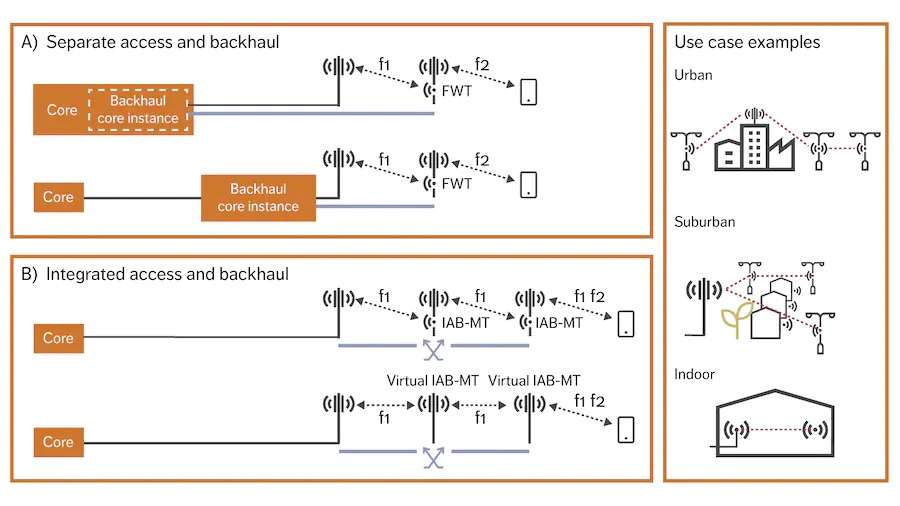IAB manages 5G backhaul wirelessly by using the same access link framework
5G millimeter wave (mmWave) spectrum deployments require greater cell density than ever before, but this presents a practical problem for Communication Service Providers (CSPs) — how to manage the backhaul. The 3GPP has developed Integrated Access and Backhaul (IAB) as a wireless solution. 3GPP Release 16 (R16) adds IAB functionality.
Challenges abound for 5G mmWave network planning, starting with propagation. Successful mmWave deployments require going street-side and inside building architecture.
“These assets will be deployed on macro sites (rooftops, towers) and street sites (poles, walls, strands) in urban areas with high demands on capacity and speed, as well as in suburban areas with fiber-like fixed wireless access (FWA) services, writes Ericsson Chief Technology Officer Erik Ekudden.
IAB is designed to be a scalable and efficient means of handling doing so, without degrading core network function performance. IAB reuses existing network functions and interfaces, Ekudden said.

IAB helps carriers maximize spectrum efficiency, explained Amitabha Ghosh and Mark Cudak of Nokia Bell Labs. They described IAB as “a multi-hop approach to network deployment.”
“Wireless self-backhauling uses the same wireless channel for coverage and backhaul connectivity to other base stations, which leads to greater performance, more efficient use of spectrum resources and lowers equipment costs, while also reducing the reliance on the availability of wired backhaul at each access node location.” they said.
Donors and nodes
In a 5G IAB topology, some base stations with wired backhaul act as IAB donors. The remaining base stations are IAB nodes, transmitting backhaul via donors. To end-users, the process and results are invisible.
“Both types of [base stations] generate an equivalent cellular coverage area and appear identical to user equipment (UE) in its coverage area. IAB allows operators to leverage their existing mmWave spectrum licenses and have the freedom to deploy separate backhaul where needed, without additional interference analysis that can subject to regulatory review (and potential denial),” wrote Ghosh and Cudak.
This provides a scalable wireless backhaul strategy for carriers that can be migrated easily to fiber if and when necessary, according to Ericsson’s Ekudden.
“From a transport perspective, IAB provides generic IP connectivity to enable an easy upgrade to fiber transport when needed,” said Ekudden.
Ekudden described how IAB maximizes Time Delay Duplexing (TDD) in 5G mmWave.
“The mix and duration of different phases can be flexible depending on the scenario, access/backhaul link performance, load and so on. Due to the half-duplex constraint, there will be time periods in which the nodes are blocked from transmission in a normal DL slot, effectively reducing the peak rate for an IAB node compared with a similar node with wired (non-limited) backhaul. This occurs whenever there is a transmission over the NR backhaul link, as the receiving end of the link will not operate according to the overall TDD pattern,” he said.
MmWave presents a fundamental deployment challenge for carriers, but the same massive bandwidth presents tremendous business opportunities as well. IAB integrates a backhaul solution with an eye towards the future.
“IAB can provide an economically feasible mechanism to quickly provide universal coverage, thus helping to effectively capture more traffic, allowing a straightforward and incremental upgrade pathway to improving capacity over time,” wrote Ghosh and Cudak.

